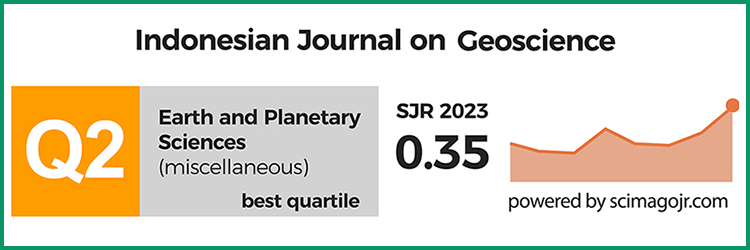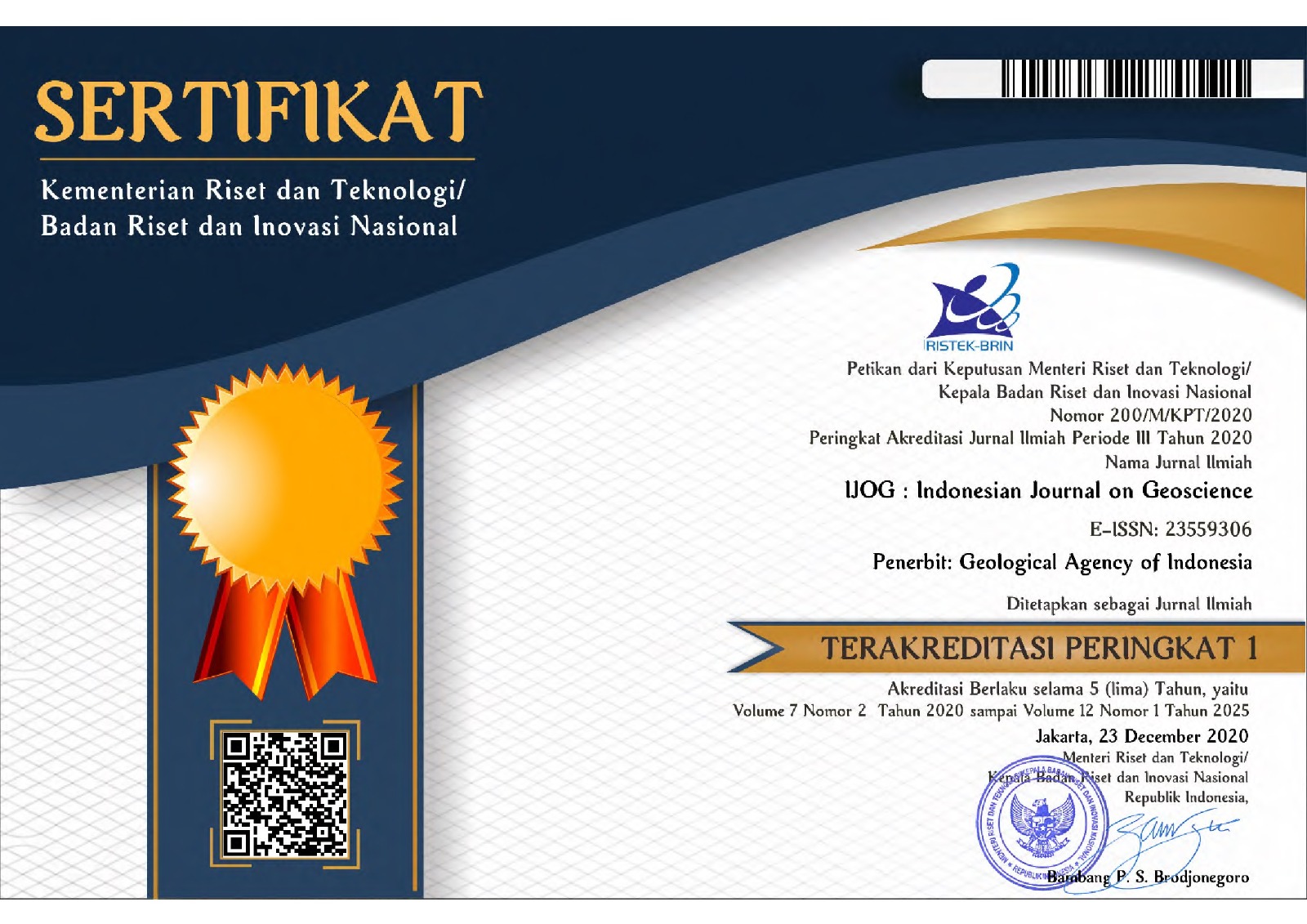Rainfall Infiltration-induced Slope Instability of the Unsaturated Volcanic Residual Soils During Wet Seasons in Indonesia
DOI:
https://doi.org/10.17014/ijog.9.1.71-85Keywords:
rainfall, infiltration, antecedent rain, shallow slope failure, slope stability, residual soilAbstract
DOI:10.17014/ijog.9.1.71-85
Located in the ring of fire, Indonesia is widely covered by volcanic soil deposits in various hilly or mountainous areas, especially in Java Island. It is also being characterized as a tropical region, rainfall-induced slope failure in residual volcanic soil, and it is of practical significance to study its mechanism. This paper presents the study of the influence of rainfall and antecedent rainfall pattern on the stability of a residual slope in Yogyakarta. Two residual soil types, clayey sand, SC, and high plasticity clay, CH, were investigated in this study which is of different soil-water and hydraulic characteristics. The studied area was located in Kedungrong Village, Samigaluh, Kulonprogo. The rainfall record was obtained from the automatic rain gauge station in Kalibawang catchment area during November 2001. Two rainfall scenarios were modelled in the numerical analysis; those classified as the major rainfall that precipitates for thirty days (Condition 1) and the three influencing-rainfall (Conditions 2 to 4). Based on the simulation result from the major rainfall and the antecedent rainfall, the slope tended to fail when the precipitation went on continuously for three days with the so-called rolling rainfall pattern. The stability of the slope was dependent on the soil-water and hydraulic properties of the soil layer.



















